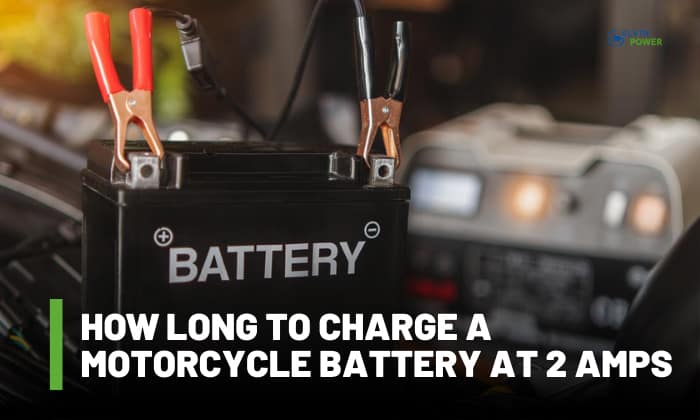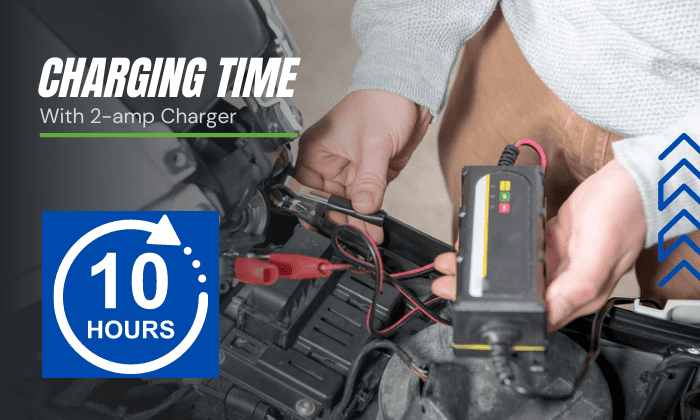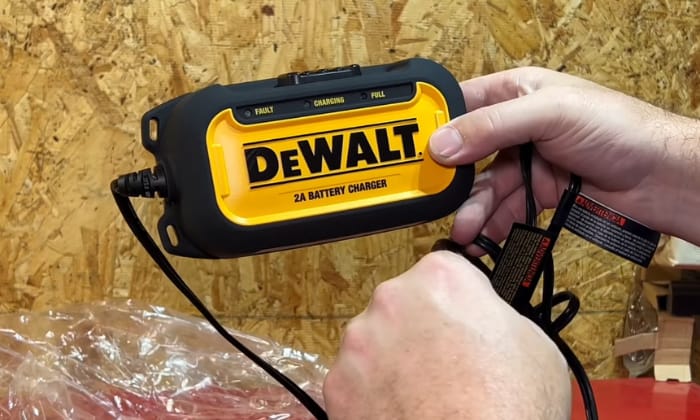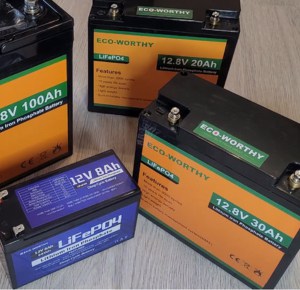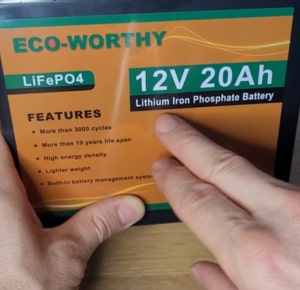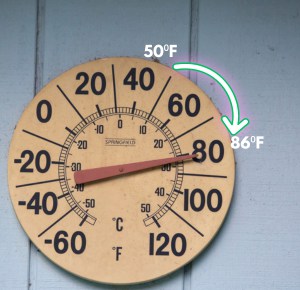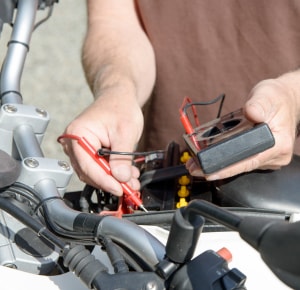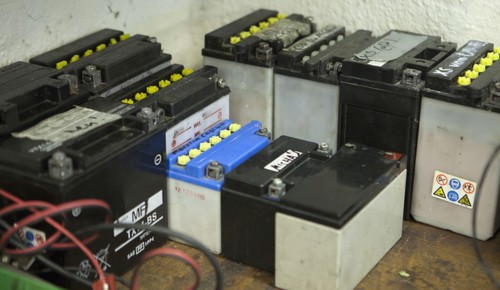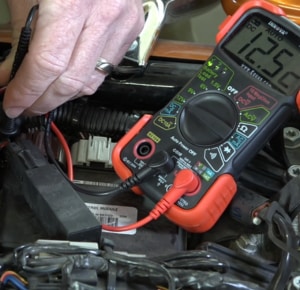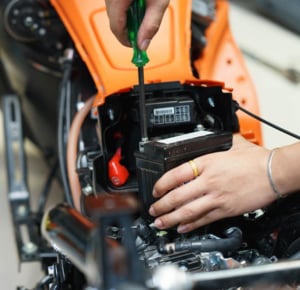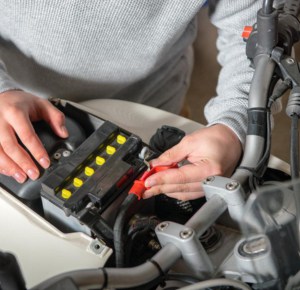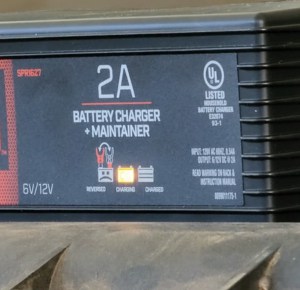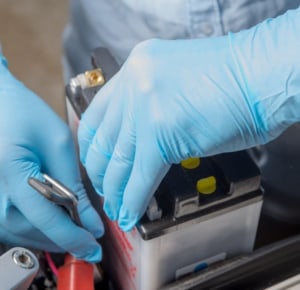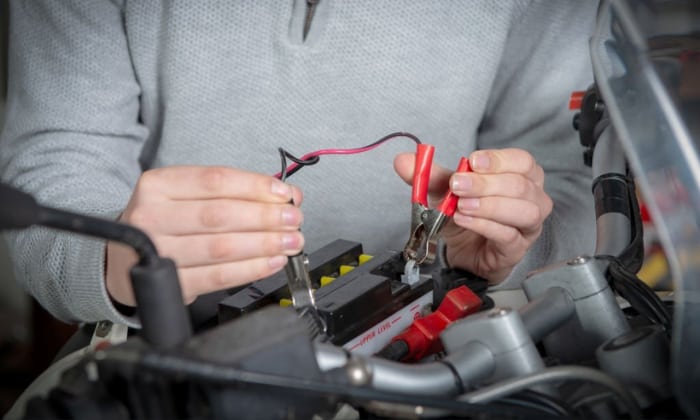Motorcycle batteries have smaller capacities than car batteries, so charging them at a high amperage for the first time might be nerve-racking, due to the possibilities of an overload.
However, if you know how long to charge a motorcycle battery at 2 amps, your power bank will work fine without problems. You might need 10 hours to ‘revive’ a fully drained 20Ah-battery, and up to 15 hours for a 30-Ah one.
Table of Contents
Charging Time for Motorcycle Battery With 2-amp Charger
How long does it take to charge a motorcycle battery? We can estimate the charging time based on the battery capacity in amp-hours:
\[
\text{{Time (h)}} = \frac{{\text{{Capacity (Ah)}}}}{{\text{{Charger current (A)}}}}
\]
For example, if we want to charge a dead motorcycle battery with a capacity of 20 Ah using a 2 amp charger, the time it would take to finish the task would be:
\[
\text{{Time (h)}} = \frac{{\text{{Capacity (Ah)}}}}{{\text{{Charger current (A)}}}} = \frac{{20 \, \text{{Ah}}}}{{2 \, \text{{A}}}} = 10 \, \text{{h}}
\]
We can also use this relationship for other battery capacities. If we charge a 30 Ah battery, we will need 15 hours.
Estimated Charging Time
Here is a summary of charging times for different chargers and battery capacities. We’ll compare 1 amp, 1.5 amp and 2 amp chargers:
| Battery Capacity in amp hours | Charging hours of different motorcycle chargers | ||
| At 1 amps | At 1.5 amps | At 2 amps | |
| 3 | 3 | 2 | Not recommended |
| 5 | 5 | 3.3 | Not recommended |
| 10 | 10 | 6.7 | Not recommended |
| 12 | 12 | 8 | Not recommended |
| 20 | 20 | 13.3 | 10 |
| 30 | 30 | 20 | 15 |
We can see that if we compare a 1 amp vs 2 amps charger, the lower amp rating chargers take longer to power the motorcycle.
Furthermore, you can leverage this tool to rapidly assess the charging duration.
A 2 amp charger is used to trickle charge a car battery, but it may be a lot for a motorcycle or an ATV battery. This amperage is not recommended for 12V power banks with a capacity of less than 20Ah.
Factors Affecting Charging Time
1. Battery capacity
A larger battery will take longer to power. In our table, a 20 Ah battery will become full faster with a 2 amp charger than a 30 Ah battery.
2. Remaining energy reserve
The more discharged the battery is, the longer it will take to recharge. It’s faster to recharge a battery that’s 50% drained than a fully discharged one. However, sometimes, the 12V motorcycle battery charge rate gets slower as it gets close to 100%.
3. Temperature
Batteries charge poorly when the ambient temperature is too hot or too cold. The battery may be irreversibly damaged when charging above 131⁰F, and it won’t receive power if the surrounding’s colder than 32⁰F. The sweet spot is around 50 to 86⁰F for recharging a motorcycle battery.
4. Battery age
A battery naturally decreases in capacity as it gets older due to sulfation and other factors. Its capacity decreases by 20 to 40% after 5 years and becomes dead when it reaches 60%.
5. Battery type
Some batteries can handle fast charging better than others. Lithium ion batteries handle fast charging the best, followed by absorbed lead glass (AGM) batteries.
Here is a comparison of the characteristics of different battery types:
| Battery type | Flooded lead acid | Gel Acid | AGM | Lithium Ion |
| Pros | – Very affordable
– Very common |
– Sealed and therefore immune to leakage
– Less likely to become hot – Less gas emissions than the flooded type |
– Affordable
– Common – Sealed – no need to top off water – Less gas emissions than the flooded type |
– Not heavy
– Slower discharge than usual batteries – No spills |
| Cons | – Can easily spill | – Expensive | – Needs very specific chargers (e.g. cannot be recharged using the settings for gel batteries) | – Expensive
– Poor performance in cold conditions |
| Charging speed | – Relatively quick | – Slow | – Quick | – Very quick |
Guide for Charging a Motorcycle Battery at 2 Amps
Step 1. Make sure the battery is compatible with the 2 amp charger.
2 amp chargers are best used for refilling motorcycle battery with capacities at 20 Ah and higher. Also, check if the charger is compatible with the type of battery you have.
Step 2. Remove the battery from the motorcycle.
Check your motorcycle’s manual to remove the battery properly. Usually, the negative cable is removed first followed by the positive cable. Lift it from the motorcycle and bring it to a well-ventilated area for charging.
Step 3. Connect the charger to the battery.
Connect the terminals of the charger to the battery and plug the charger to an outlet. You can use our equation above to estimate the time needed to power the battery fully, but an online charge time calculator is also available.
Step 4. Monitor the battery.
Some chargers have smart features to show that the battery is full. Chargers for lithium ion batteries even have a battery management system to prevent them from overcharging and becoming completely drained.
If the charger does not have smart features, a voltmeter can test if the battery is full. Unplug the battery from the charger and place the positive and negative probes on the battery. Set the voltmeter to DC, and if it reads out 12.73 volts or higher, the battery is fully charged.
Step 5. Reinstall the battery to the motorcycle.
Once the battery is full, remove the charger. Return the battery to the right slot in the motorcycle and reconnect the terminals to the right leads. The battery is now ready to give the right amount of motorcycle battery amperage to start.
Frequently Asked Questions
When would I need a battery charger?
A motorcycle battery gets charged by the vehicle’s alternator while riding. But batteries tend to discharge even if they’re not in use for a long time, so a charger is used to maintain the battery’s power.
You should plug the battery in at least once a month when it’s in storage.
What happens if I use a 2 amp charger on smaller motorcycle batteries?
The battery can get damaged if you use 2 amp chargers on batteries with less than 20 Ah. The plates inside the battery might buckle, the electrolytes may boil, or even worse, the battery may explode.
Can I charge the battery while still connected to the motorcycle?
Some chargers can power the battery while the battery is still in the motorcycle. They’re often called maintainers. Just make sure the leads are connected the right way.
Conclusion
Several factors can affect how long to charge a motorcycle battery at 2 amps, but the time is determinable based on the battery capacity. 2 amp chargers can safely power 20 amp batteries within 10 hours, but the estimate may change due to the temperature and battery health, among others.
Choose the correct battery chargers to power your vehicle. They can be easily operated even by first time users and help prepare your motorcycle for another thrilling ride.

I am Edwin Jones, in charge of designing content for Galvinpower. I aspire to use my experiences in marketing to create reliable and necessary information to help our readers. It has been fun to work with Andrew and apply his incredible knowledge to our content.

